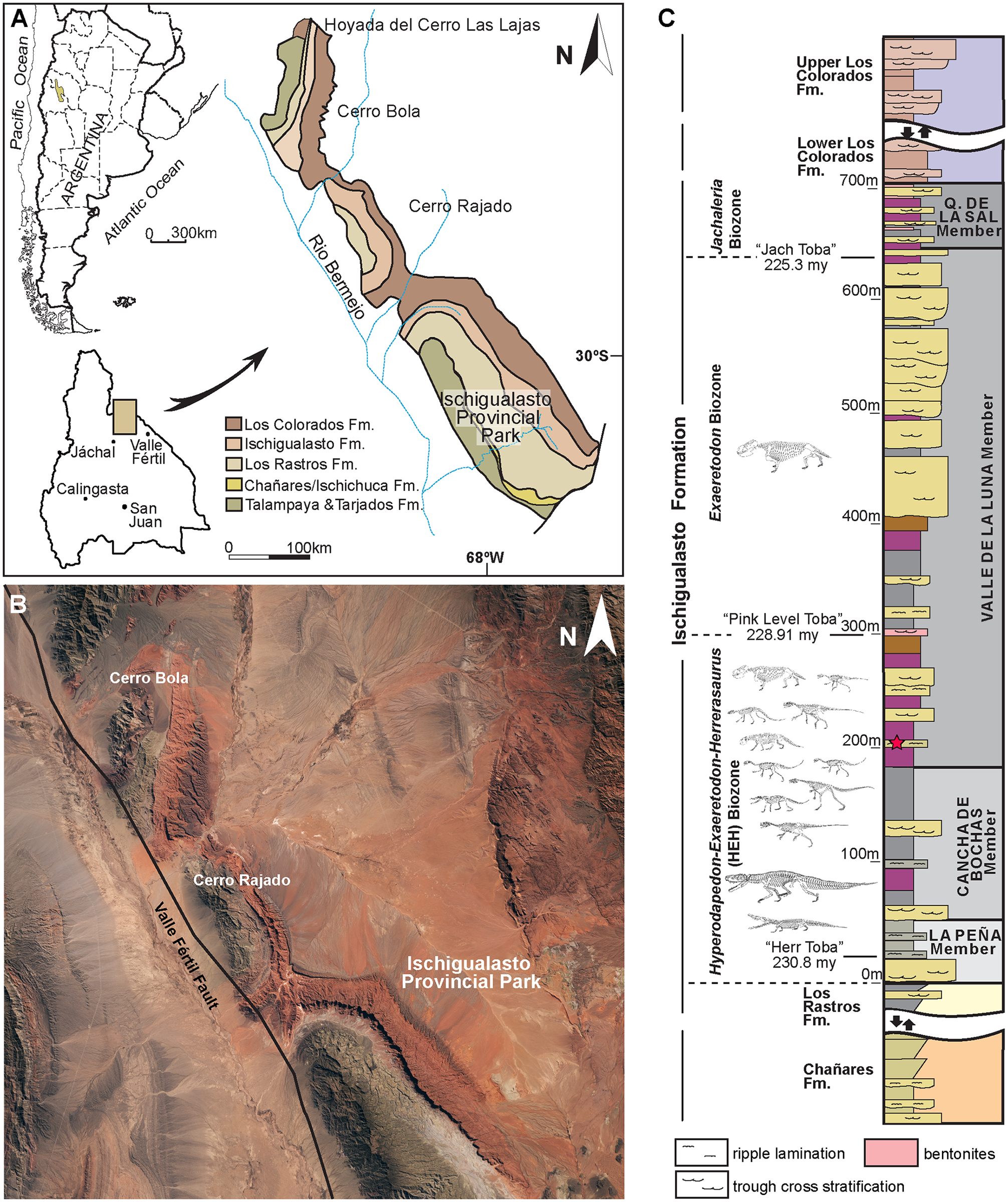|
Chiniquodon
''Chiniquodon'' is an extinct genus of carnivorous cynodonts, which lived during the Late Triassic (Carnian) in South America (Argentina and Brazil) and Africa (Namibia and Madagascar). ''Chiniquodon'' was closely related to the genus ''Aleodon'', and close to the ancestry of mammals. Other contemporaries included early dinosaurs. As both groups filled a similar ecological niche, fairly large therapsid hunters such as ''Chiniquodon'' may have been outcompeted by dinosaurs. Classification ''Chiniquodon theotonicus'', the type species, is from the Santa Maria Formation, Brazil and Chañares Formation, Ischigualasto-Villa Unión Basin, northwestern Argentina. This species is known from a number of skulls. The holotype is in the paleontological collection at Tübingen University, Germany. ''Chiniquodon kitchingi'', from the Santa Maria Formation of Brazil, was described in 1982 by A. M. Sá-Teixeira based on a single skull missing the lower jaw. When first described, it was assign ... [...More Info...] [...Related Items...] OR: [Wikipedia] [Google] [Baidu] |
Chañares Formation
The Chañares Formation is a Carnian-age geologic formation of the Ischigualasto-Villa Unión Basin, located in La Rioja Province, Argentina. It is characterized by drab-colored fine-grained volcaniclastic claystones, siltstones, and sandstones which were deposited in a fluvial to lacustrine environment. The formation is most prominently exposed within Talampaya National Park, a UNESCO World Heritage Site within La Rioja Province. The Chañares formation is the lowermost stratigraphic unit of the Agua de la Peña Group, overlying the Tarjados Formation of the Paganzo Group, and underlying the Los Rastros Formation. Though previously considered Ladinian in age, U-Pb dating has determined that most or all of the Chañares Formation dates to the early Carnian stage of the Late Triassic.Kent et al, 2014, p.7959 The Chañares Formation has provided a diverse and well-preserved faunal assemblage which has been studied intensively since the 1960s. The most common reptiles were ... [...More Info...] [...Related Items...] OR: [Wikipedia] [Google] [Baidu] |
Aleodon
''Aleodon'' is an extinct genus of cynodonts that lived from the Middle to Late Triassic. Relatively few analyses have been conducted to identify the phylogenetic placement of ''Aleodon'', although some have placed it as a sister taxon to '' Chiniquodon''. Two species of ''Aleodon'' are recognized: ''A. brachyrhamphus'' which was discovered in Tanzania, and ''A. cromptoni'' which was discovered most recently in Brazil. The name for the genus ''Aleodon'' was created when Alfred W. "Fuzz" Crompton initially discovered the type species, ''Aleodon brachyrhamphus''. The genus name, "''Aleodon''" referred to the grinding nature of the postcanine teeth, while "''brachyrhamphus''" referred to the relatively short snout of the specimen. The most recently discovered species, ''A. cromptoni'' was named after Crompton. Discovery and classification In 1955, ''Aleodon'' was initially classified as a gomphodont cynodont based on the partial skull and lower jaw fossils found in 1933 in Tanza ... [...More Info...] [...Related Items...] OR: [Wikipedia] [Google] [Baidu] |
Ischigualasto Formation
The Ischigualasto Formation is a Late Triassic geological formation in the Ischigualasto-Villa Unión Basin of southwestern La Rioja Province, Argentina, La Rioja Province and northeastern San Juan Province, Argentina, San Juan Province in northwestern Argentina. The formation dates to the late Carnian and early Norian stages of the Late Triassic (around 231.7 to 225 Ma), according to radiometric dating of ash beds. The Ischigualasto Formation is part of the Agua de la Peña Group, overlying the Los Rastros Formation and overlain by the Los Colorados Formation. The formation is typically subdivided into four Member (geology), members, from old to young; La Peña, Cancha de Bochas, Valle de la Luna and Quebrada de la Sal. The sandstones, mudstones, conglomerate (geology), conglomerates and tuffs of the formation were deposited in an fluvial (river-dominated) floodplain depositional environment, environment, characterized by cool temperatures and strongly seasonal rainfall. The form ... [...More Info...] [...Related Items...] OR: [Wikipedia] [Google] [Baidu] |
Isalo II Formation
Isalo II, also known as the Makay Formation, is an informal Triassic geological unit in Madagascar Madagascar, officially the Republic of Madagascar, is an island country that includes the island of Madagascar and numerous smaller peripheral islands. Lying off the southeastern coast of Africa, it is the world's List of islands by area, f .... It is described as "thick beds of mottled red or green clays associated with soft cross-bedded sandstones, light in colour and much finer-grained than the Isalo I sandstones." It is prominent in the Makay Massif.Brenon, P. (1972). The Geology of Madagascar. In: Battistini, R., Richard-Vindard, G. (eds) ''Biogeography and Ecology in Madagascar''. Monographiae Biologicae, vol 21. Springer, Dordrecht. https://doi.org/10.1007/978-94-015-7159-3_2 Fossil content Amphibians Reptiles Synapsids References {{reflist Geologic formations of Madagascar Triassic System of Africa Triassic Madagascar Ladinian Stage Carnian Sta ... [...More Info...] [...Related Items...] OR: [Wikipedia] [Google] [Baidu] |
1936 In Paleontology
Plants Ferns and fern allies Cycadophytes Ginkgophytes Conifers Cupressaceae Flowering plants Magnoliids Monocots Basal Eudicots and unplaced core Eudicots Superasterids Superrosids Other flowering plants Arthropods Insects Archosauromorphs Dinosaurs Pterosaurs Synapsids Non-mammalian References {{DEFAULTSORT:1936 In Paleontology 1930s in paleontology 1936 in science, Paleontology 6 ... [...More Info...] [...Related Items...] OR: [Wikipedia] [Google] [Baidu] |



